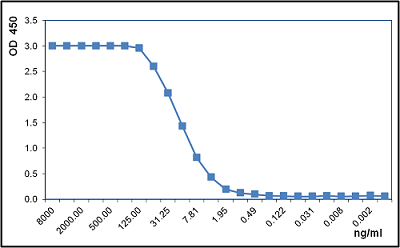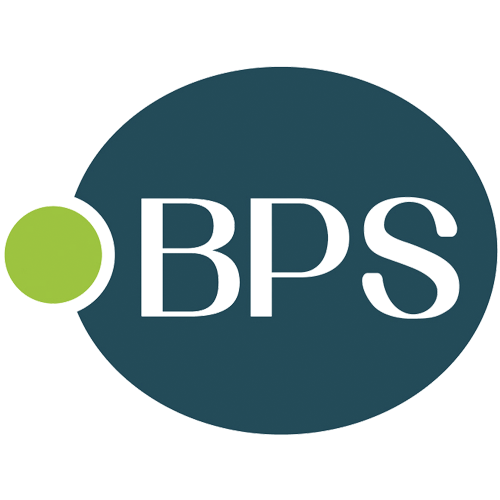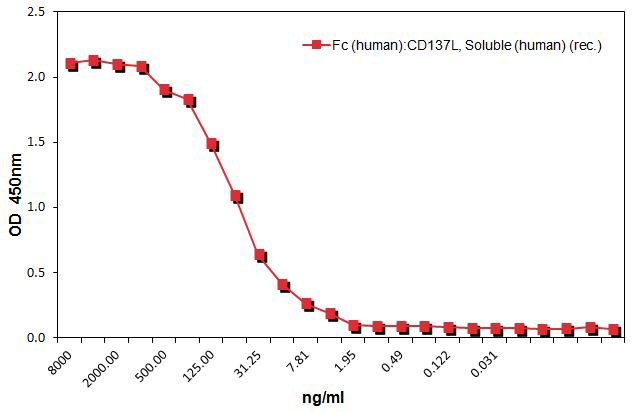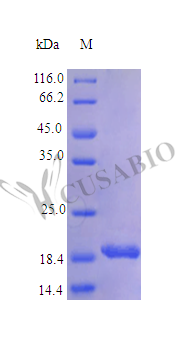
Pull down assay of hCD137L-FLAG (Prod. No. AG-40A-0198T) by hCD137-Fc. Method: 5microg of hCD137-Fc (or control Fc protein), 5microg of hCD137L-FLAG (or control FLAG protein), and protein G resin (or anti-FLAG resin) were incubated in 0.5ml
CD137L, Soluble (human) (rec.)
AG-40A-0198T
Protein IDP41273
Product group Proteins / Signaling Molecules
Overview
- SupplierAdipoGen Life Sciences
- Product NameCD137L, Soluble (human) (rec.)
- Delivery Days Customer10
- CertificationResearch Use Only
- Concentration1 mg/ml
- Estimated Purity>90%
- Protein IDP41273
- Protein NameTumor necrosis factor ligand superfamily member 9
- Scientific DescriptionProtein. The extracellular domain of human CD137L (aa 50-254) is fused at the N-terminus to a FLAG®-tag. Source: HEK 293 cells. Endotoxin content: 90% (SDS-PAGE). The CD137 ligand (CD137L; 4-1BBL) is a member of the tumor necrosis factor (TNF) family. CD137L is a type II transmembrane protein found on activated macrophages, dendritic cells and mature B cells. The interaction with its receptor 4-1BB induces recruitment of TNF receptor-associated factor 1 (TRAF1) and TRAF2 and interaction with the kinase p56lck. CD137 and CD137L have been reported to be involved in tumor rejection, apoptosis, anti-viral immunity, diabetes, in T and B cell co-stimulation and modulation of the immune response. - The CD137 ligand (CD137L; 4-1BBL) is a member of the tumor necrosis factor (TNF) family. CD137L is a type II transmembrane protein found on activated macrophages, dendritic cells and mature B cells. The interaction with its receptor 4-1BB induces recruitment of TNF receptor-associated factor 1 (TRAF1) and TRAF2 and interaction with the kinase p56lck. CD137 and CD137L have been reported to be involved in tumor rejection, apoptosis, anti-viral immunity, diabetes, in T and B cell co-stimulation and modulation of the immune response.
- Storage Instruction-20°C,2°C to 8°C
- UNSPSC12352202






